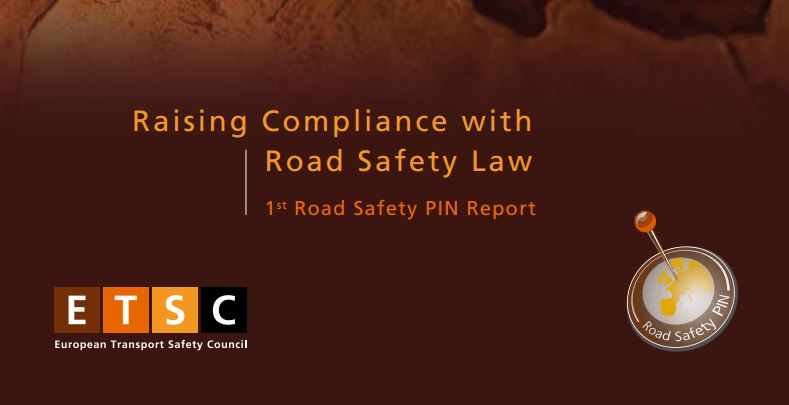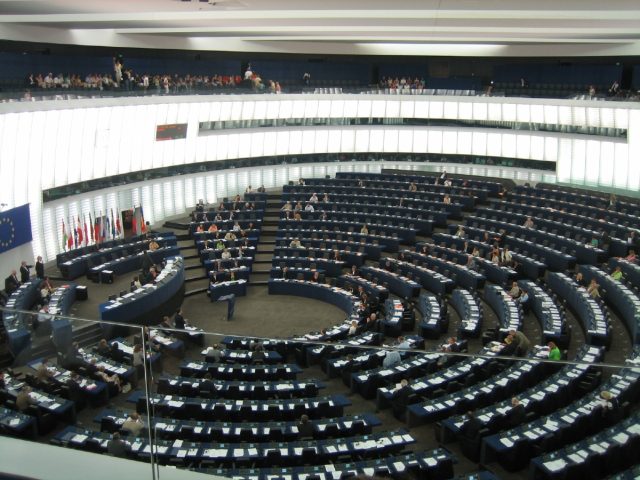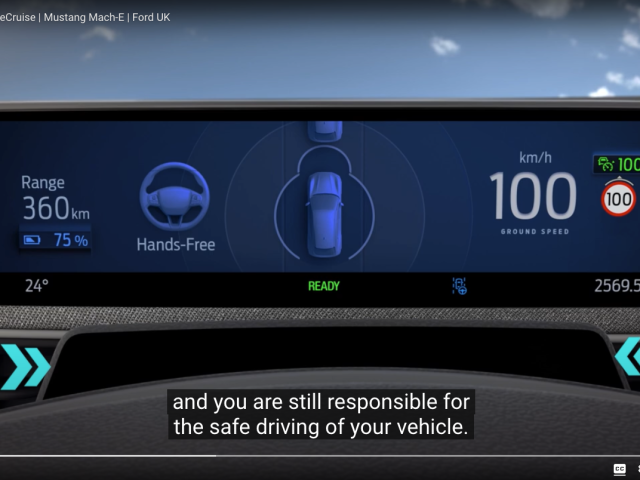
1st Annual Road Safety Performance Index (PIN) Report
This report provides an overview of European countries’ performance in five areas of road safety. It shows how countries have progressed in reducing annual numbers of road deaths between 2001 and 2005, and how they perform in the three key areas of road user behaviour: seat belt use, drink driving and speed. It also gives an overview of the penetration of state-of-the-art seat belt reminders into new passenger cars sold in European countries.
The relevant rankings have been carried out under the Road Safety Performance Index (PIN), which was set up in April 2006 by the European Transport Safety Council (ETSC). They cover 27 countries, including all states that were members of the European Union up to 2007, as well as Norway and Switzerland.
Progress toward the target
The European Union has set itself the target of reducing the number of yearly road deaths by 50% between 2001 and 2010. Comparison of developments up to 2005 shows that some countries have reached reductions of more than 25% during these first four years. This includes France (35%), Luxembourg(34%) and Belgium(27%). Portugalreached a 25% drop in deaths, and Switzerland, Sweden and the Netherlands also scored reductions between 24% and 25%. While the first four countries have a medium level of safety, Switzerland, Sweden and the Netherlands have been frontrunners in Europe for some time. This confirms that fast progress in road safety is possible for all countries, whatever their starting point.
Other countries have progressed to a lesser extent. Some countries, including Lithuania, Cyprus andHungary, have actually recorded an increase in the number of road deaths between 2001 and 2005.
Seat belt use
Using the seat belt reduces the risk of fatal injury by about 50%. This is why the European Union has passed legislation making seat belt wearing obligatory in all seats where belts are available. Yet seat belt usage varies considerably among European countries. Highest levels of seat belt wearing are found in France, Germanyand Malta, where over 95% of front seat occupants wear their seat belt. In the Netherlands, Norway, Swedenand the U.K.this is between 90% and 95%.
The biggest group of countries, including Austria, Cyprus, Denmark, Finland, Ireland, Luxembourg, Portugal, Sloveniaand Switzerland,shows wearing rates between 80% and 90%. Rates between 70% and 80% are reported from Belgium, Czech Republic, Estonia, Italy, Latvia, Polandand Spain. Hungary has with 67% the lowest rate but it can be expected that countries that do not carry out measurements have even poorer rates. These countries include Greece, Lithuaniaand Slovakia. No country has so far achieved a rate of 99% seat belt use across all road types. But studies suggest that seat belt reminders can help to reach this high a use. Also, some countries come close to this rate on their motorways (e.g. France). It is estimated that another 2,400 lives could be saved yearly if 99% of drivers used their seat belt in all EU countries.
Drink driving
While the dangers linked to drink driving are fairly well understood, this phenomenon is still widespread in Europe. However, the recording of drink driving crashes and casualties as such tends to be patchy, which makes monitoring of drink driving levels a difficult task.
Levels of deaths related drink driving cannot be compared between countries, as there are large differences in the way in which countries define and record a ‘crash related to drink driving’. Countries are therefore compared on the basis of developments in deaths from drink driving crashes, relative to developments in other road deaths, using each country’s own method of identifying ‘drink driving related crashes’.
The ranking covers 20 European countries. In half of these countries, progress on drink driving has contributed more than its share to overall reductions in deaths over the last decade. This is especially true for the Czech Republic, Belgium, Germanyand Poland. In the Czech Republic, road deaths from drink driving crashes dropped 11.3% faster than deaths from other crashes. For Belgium, this figure is 9.4%, for Germany 6.2% and for Poland 5.6%.
In the other half of countries, changes in drink driving deaths have not contributed their share to overall reductions in traffic deaths. This group includes Sweden, Spain, Hungary, Slovenia, Finland, Great Britain and Estonia. In these countries, developments in drink driving deaths have rather slowed down overall progress in reducing road deaths.
Speed
The impact of speed on road traffic crashes has been studied extensively, and measures to reduce speed are known. Yet there is little progress on reducing speeds in Europe. Average speeds and numbers of speed limit violations remain high with only few encouraging signs, notably from France, but also from Belgium and Switzerland, where speeds have decreased recently across all types of road. In France, mean speeds have dropped by 6% to 11%, depending on the road type. In Belgium, reductions range from 4% to 6%, and in Switzerland from 3% to 8%. In Norway, speeds decreased in built-up areas and on motorways. In the Netherlands, there has been a decrease on motorways with a 100 km/h limit. In Great Britain, Ireland and Portugal, the picture is rather mixed. While there has been a reduction on one type of road, there has been an increase on another. Driving speeds also increased on motorways in Austria, and on rural roads in Estonia, Latvia and Poland.
Seat belt reminders
Some countries in Europe reach a high penetration rate of seat belt reminders in new cars. In Sweden, nearly 70% of new passenger cars were equipped with seat belt reminders for the driver seat in 2005. In Luxembourg, this was 64% and in Germany63%. The proportion of new passenger cars in Europe that are equipped with seat belt reminders for the driver seat is estimated to be 56% (2005). In the Czech Republic, Slovakia, Hungary, Poland, Lithuania, Italy and Greece, this is however less than 50%.
The Swedish example shows that governmental bodies, local authorities and companies can help increasing the market penetration of seat belt reminders by including them in their vehicle purchase and leasing policies.
The 1st Road Safety PIN Report concludes that fast progress in road safety is possible in every country in Europe, whatever its starting point. Progress toward the EU target has been fastest in countries with a medium level of safety that have prioritised compliance with key traffic safety rules. Better behaviour in the areas of seat belt use, drink driving and speed – alongside improvement in other areas such as infrastructure and vehicle safety – has a great potential for saving more lives on European roads in the future.
Download







